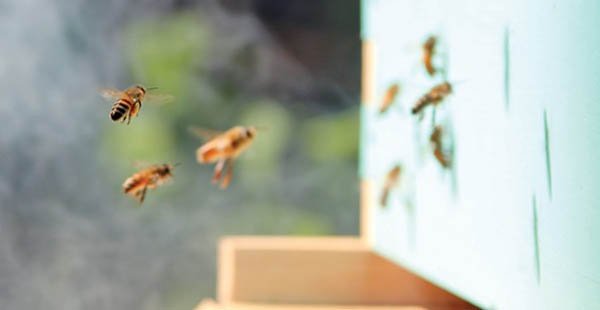
In the battle of positive public relations, it isn't always enough for golf course superintendents to tell people what they are doing in the name of environmental stewardship. Sometimes you have to let them see, touch and, in the case of Highlands Falls Country Club, taste what is taking place.
"Not everybody thinks country clubs or golf courses are great places for the environment," said Fred Gehrisch, CGCS at Highlands Falls Country Club in Highlands, North Carolina. "I tell our members part of my job is to convince people on your behalf that we are great."
Three years ago, Gehrisch joined the growing number of superintendents who are keeping bees at their respective golf courses. His members have embraced the project and what it stands for, as has much of the community around the club in Highlands, North Carolina.
"We watched other clubs doing it. It's a great thing to do," Gehrisch said. "There are a few environmentalists in this area, and this is a great way to prove to people that golf courses don't just dump chemicals everywhere. If you can raise bees here, it demonstrates the environmental consciousness of our programs.
If you can raise bees here, it demonstrates the environmental consciousness of our programs...
"People who don't like golf courses can make life difficult. I'm trying to head off issues before they become issues. We give some honey away as gifts to people we we know are not so wild about golf."
The program has been the subject of stories in two local newspapers and city leaders, including the mayor, have stopped by to learn more about it. The town of Highlands has since been named a designated Bee City by Bee City USA, a program that recognizes municipalities that provide bees with "healthy habitat, rich in a variety of native plants and free to nearly free of pesticides." Bee City USA is an initiative of the Xerces Society, a non-profit environmental organization that "focuses on the conservation of invertebrates considered to be essential to biological diversity and ecosystem health."
"The members love it," Gehrisch said. "They show it off to their guests every chance they get when they get to No. 14."
Gehrisch has wanted to start a bee program for a long time. Once he decided to do it, he and assistant superintendent Josh Cantrell spent the winter three years ago on Youtube learning the tricks of the trade, like how to calm the bees through the use of a smoker to inspect the hive and harvest honey.
"I've been stung about 20 times," Gehrisch said. "But they're usually very docile. Most of the time I wear, it's just a jacket with a hood on it, but if I'm just checking it, street clothes are fine.
"If you check them at the same time every day, they're usually very docile. If you're erratic about it, they don't like it. Each hive has its own character, and you get to know that. And don't check them when it's cloudy or drizzling. They don't like that and are super aggressive then and will sting the daylights out of you. Then there are some days they just don't like to be bothered and they'll just hit you and warn you that a sting is coming next."
At a start-up cost of about $2,000, which includes hives, bees and equipment to collect honey, they started with two hives, and have since grown to six, including two native swarms they captured.
Even the dealer who sold bees to Gehrisch did so with some skepticism, thinking that all of them would die due to their exposure to the golf course and chemicals used to manage it.
We give some honey away as gifts to people we we know are not so wild about golf.
"The first year, we had a huge honey harvest," Gehrisch said. "Usually, it takes three years to have one, and we did it the first year. When I told the woman at the bee-supply company who sold us the bees, she was surprised.
"She actually thought we'd be killers of bees."
Each year, Gehrisch and Cantrell collect the honey, filter it and bottle it for sale through the club for $8 for an 8-ounce jar. The proceeds are minimal and go back into the maintenance department budget.
"The members love to buy the honey and say it is from their club," Gehrisch said. "I tell them 'you live here, it's your gardens that helped make this.' It brings them more into the process."
Gehrisch said it is critical to communicate as much as possible with all the necessary stakeholders about the bees and the significance of such a program. It doesn't hurt that he can show them how docile the bees are - most of the time.
"There are native bees already here; we're just managing them and collecting the honey," he said. "When the members see me out in the apiary with no protective clothing on, it becomes a non-issue."
The bees are susceptible to cold weather in the North Carolina mountains, and Gehrisch lost four of his six hives this past winter when high winds knocked toppled four of the structures. He bought two new colonies and captured two wild ones to rebuild his numbers.
"It was like a punch in the gut," Gehrisch said. "Every hive has its own identity, and you get to know that. You start thinking 'was there more I could have done to save them?' It happens and you start to think how you can be better the next year and use it as a learning experience."
Every step along the way also represents a teaching moment.
"We probably have about $2,000 total in this," he said. "Has it paid off yet? No, but it's worth it for the PR. It's not a huge expense at all for the kind of public relations we've gotten from it."

